Recently, Ed Frazer was fascinated by some wonderfully colourful insects he frequently encounters on his Brookfield property.
It is quite likely that you may also have seen these little bugs!
Ed was so intrigued that he took some photos and sought the advice of Geoff Monteith, a respected local entomologist.
Geoff kindly identified the insects and filled in some fascinating details about them.
They are Mallotus Harlequin bugs.
We soon learned that these little bugs have some intriguing and highly developed behaviours. There is an explanation for their vibrant colouring as well.
We contacted Prue Cooper-White, an MCCG member who is a keen wildlife photographer.
Prue graciously contributed some of her own shots. Combined with Ed’s photos, they give us a good understanding of some of the intriguing behaviours of these little bugs.
Here is the info provided by Geoff, together with some wonderful shots from Prue and Ed!
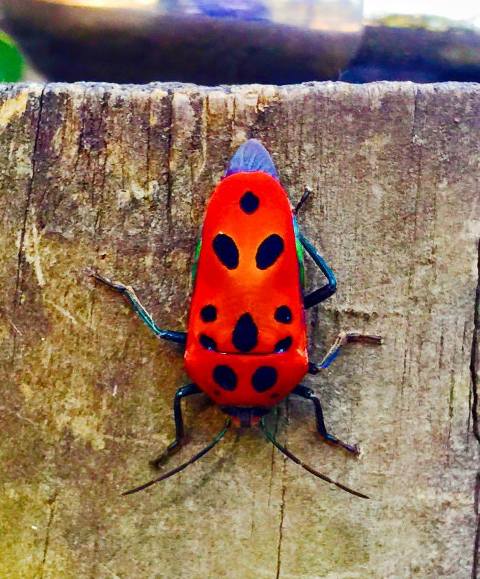
This is a common bug out in the Moggill Catchment way.
It’s name is Cantao parentum or the Mallotus Harlequin Bug.
It breeds on Mallotus trees, mostly on Mallotus philippensis but also on the smaller Mallotus claoxyloides, which looks like the one the nymphs are all sitting on in Ed’s picture below:
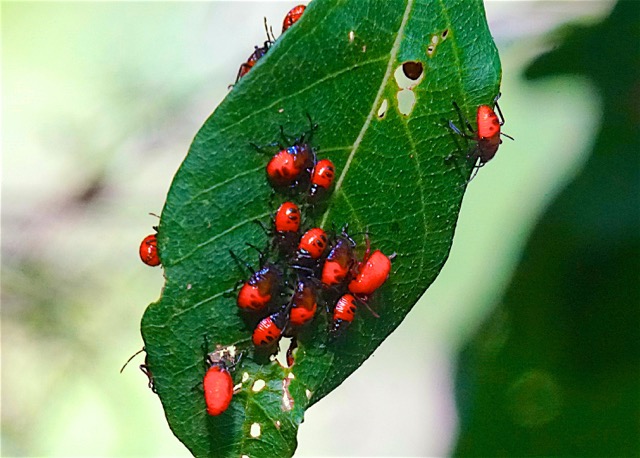
Females lay batches of eggs on the undersides of leaves and guard them by sitting on top of them until they hatch.
All bugs have tubular piercing and sucking mouthparts (called a rostrum) under their head and they insert that into the plant to suck out the sap as food, as in the following photo:
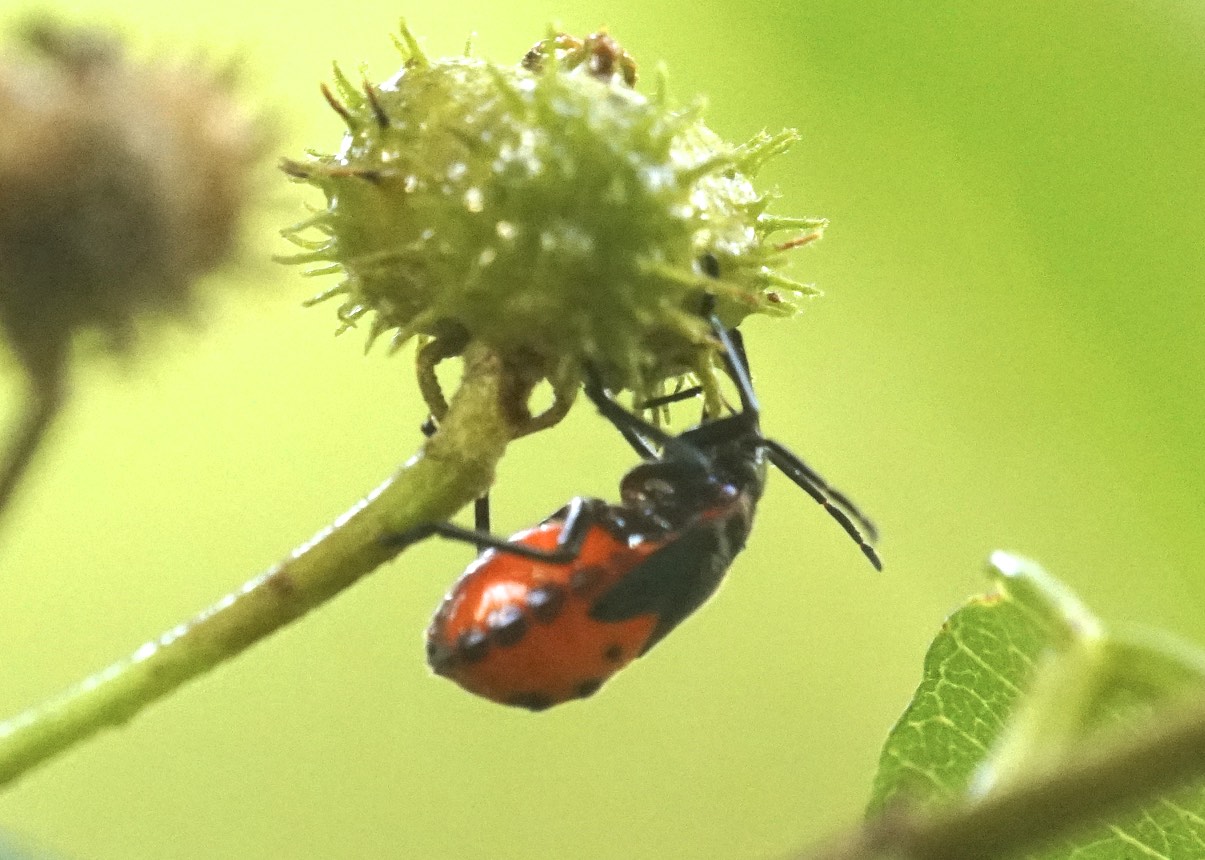
Here’s a different type of bug. We’ve included it because it is showing off the rostrum beneath it’s head very well:
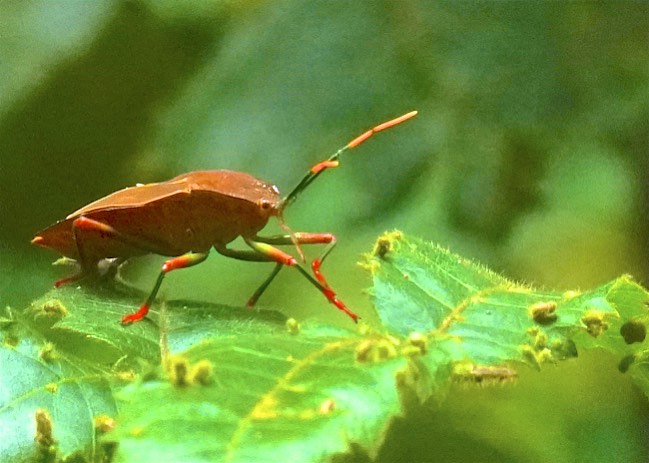 A Stilida indecora bug cleaning its rostrum – photo courtesy of Ed Frazer
A Stilida indecora bug cleaning its rostrum – photo courtesy of Ed Frazer This is a bug called Stilida indecora and it feeds only on trees of the family Sapindaceae. It seems this one is feeding on a Cupaniopsis, which is the right family. This bug is cleaning its rostrum by wiping the sharp tip of it with its front feet.
Most bugs have a smelly secretion which they can squirt out through gland apertures which open on the back of the nymphs and on the underside of the thorax of adults.
Cantao is no exception and they will readily squirt this out when handled. It is designed to prevent predators, especially birds, from eating them.
Their bright colour is “warning colouration” designed to make birds, who get a mouthful of burning smelly secretion, remember not to try to eat another bug that looks like that!
But Cantao has another spectacular trick!
Most insects hide away during winter to avoid being eaten during their hibernating non-feeding winter siesta. By the time winter comes all Cantao have progressed from the nymphal stage to the extra brightly coloured adult stage, as in the one feeding on the fruit in the photo below:
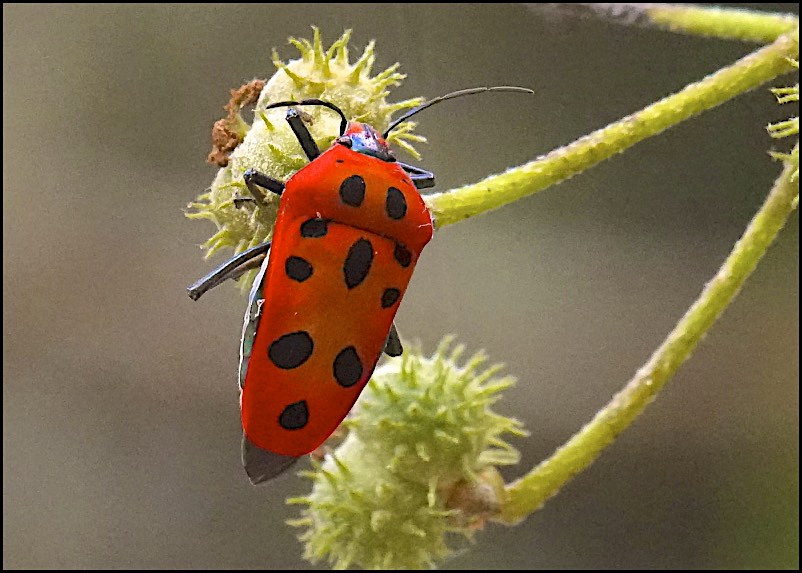
In winter all these adults come together into big clusters of hundreds (sometimes thousands) of individuals which all cling to the top foliage of a tree where they form a big round brilliantly coloured ball which can be the size of a soccer ball.
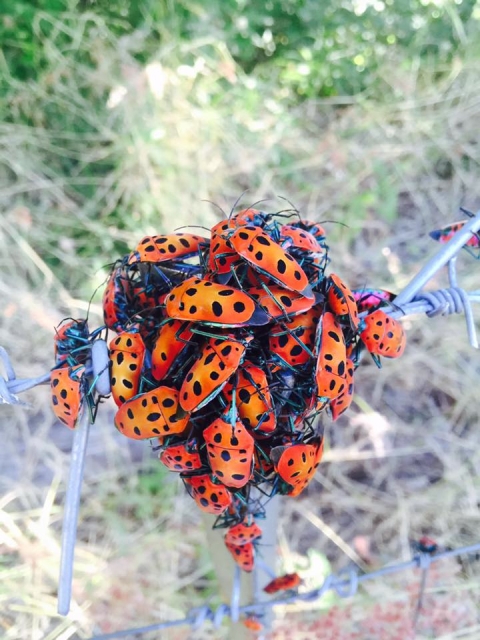
They then sit quietly in this position all through winter until spring comes and they disperse and go back to Mallotus trees to mate and lay their eggs for the next summer generation to get under way.
What they are doing in these big winter clusters is practicing ‘safety in numbers’ where, with their combined defensive smell capacity, no bird or animal would dare attack them. The trees they cluster on are not usually their Mallotus food plant trees and more usually are some taller tree. I’ve often seen their clusters in the high branches of hoop pines.
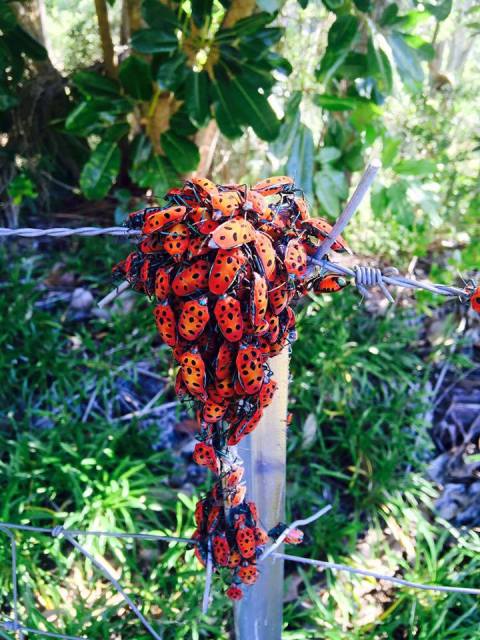
Editor’s note: Many thanks to Geoff, Ed and Prue for providing such an insight into just a small part of the microscopic world that surrounds us. Not sure what our readers’ reaction is, but I find it somewhat remarkable and gratifying that such tiny insects have such highly developed and sophisticated behaviours!

